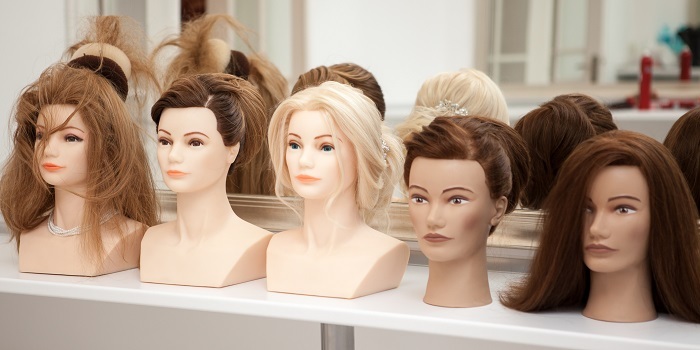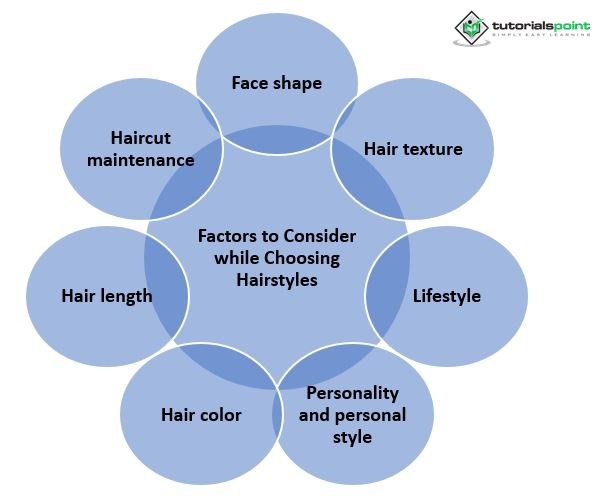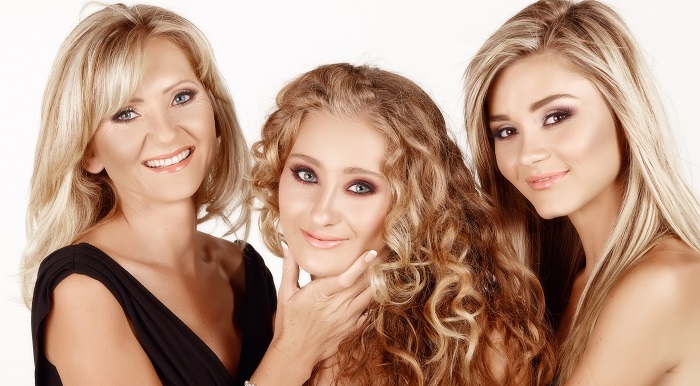

When choosing a hairstyle, it's important to consider factors such as your face shape, hair texture, lifestyle, and personal preferences. The right hairstyle can enhance your features, complement your style, and boost your confidence. In this process, it's important to take into account different factors to achieve a flattering and practical look.

Here are some potential factors to consider when discussing factors to consider while choosing hairstyles −
Face shape − Different face shapes lend themselves to different hairstyles. Factors such as the length and width of the face, as well as the prominence of certain features like the cheekbones or jawline, can all impact which hairstyles will be most flattering.
Hair texture − Hair texture can vary widely, from fine and straight to thick and curly, and different hairstyles will work better with different textures. Factors to consider might include whether the hair is naturally curly or straight, how much volume it has, and whether it tends to frizz or stay smooth.
Lifestyle − Different hairstyles may be better suited to different lifestyles, depending on factors like how much time and effort a person is willing to put into styling their hair, how active they are, and whether they need a hairstyle that can be easily maintained throughout the day.
Personality and personal style − A person's hairstyle can be an important expression of their personality and personal style. Factors to consider might include whether they prefer classic or trendy looks, whether they're comfortable with bold or unconventional styles, and whether they want a hairstyle that will stand out or blend in.
Hair color − Different hairstyles can be more or less flattering depending on a person's hair color. Factors to consider might include whether the hair is naturally light or dark, whether it has highlights or lowlights, and whether the person wants a hairstyle that will accentuate or downplay their hair color.

Hair length − Hair length can be a major factor in determining which hairstyles will work best for a person. Factors to consider might include whether the person wants a short, medium, or long hairstyle; whether they want to keep their hair one length or add layers; and whether they're open to the idea of cutting off a significant amount of hair.
Haircut maintenance − Different haircuts require different levels of maintenance, and factors such as how often a person is willing to visit a salon, how much they're willing to spend on hair products, and how much time they're willing to spend styling their hair each day can all impact which hairstyles will be most practical for them.
When selecting a hairstyle, there are several factors to consider. The first is face shape, as different hairstyles can complement different face shapes. For example, a hairstyle with volume at the top and narrow at the sides can help balance a heart-shaped face, while a bob or lob can work well with a square-shaped face. Hair texture is another factor to consider, as different hairstyles can work better with different hair textures.
For example, curly hair may benefit from layers that help distribute volume, while fine hair may benefit from a blunt cut to create the illusion of thickness. Lifestyle is another important factor, as some hairstyles may be easier to maintain than others, depending on how much time and effort a person is willing to put into styling their hair. Personality and personal style are also important, as a person's hairstyle can be an expression of their individuality. Hair color, hair length, and haircut maintenance are other factors to consider when selecting a hairstyle, as each can impact which hairstyles will be most flattering and practical.
Here's a brief overview of the importance and significance of the factors to consider when selecting a hairstyle −
Face shape − Understanding one's face shape is important when selecting a hairstyle because certain hairstyles can accentuate or downplay facial features, enhancing one's overall appearance.
Hair texture − Understanding hair texture is important when selecting a hairstyle because different hair textures require different styling techniques and can affect the final look of the hairstyle.
Lifestyle − Considering one's lifestyle when selecting a hairstyle is important because some styles require more maintenance than others, and some may not be practical for certain activities or professions.
Personality and personal style − Choosing a hairstyle that aligns with one's personality and personal style can boost confidence and help express individuality.
Hair color − Hair colour can impact how certain hairstyles look, and choosing a hairstyle that complements one's hair colour can enhance one's overall appearance.
Hair length − Hair length can greatly impact how easy it is to maintain a hairstyle and can also affect how certain hairstyles look.
Haircut maintenance − Understanding the maintenance requirements of a hairstyle is important because some styles require more frequent trips to the salon and more maintenance at home than others. It's important to choose a hairstyle that fits with one's schedule and budget.

Here are some tips for choosing a hairstyle based on the different factors to consider −
Face shape − Research which hairstyles work best with your face shape and ask your stylist for recommendations. Avoid hairstyles that emphasize features you want to downplay.
Hair texture − Talk to your stylist about which hairstyles work best with your hair texture. Consider products that can help enhance or control your hair texture, such as volumizing products for fine hair or anti-frizz products for curly hair.
Lifestyle − Choose a hairstyle that fits your lifestyle. If you have a busy schedule, opt for a low-maintenance style that doesn't require much styling. If you're very active, choose a style that can be easily tied back or secured.
Personality and personal style − Choose a hairstyle that aligns with your personal style and makes you feel confident. Consider incorporating current hair trends into your look, but don't be afraid to make it your own.
Hair color − Choose a hairstyle that complements your hair color. Consult with a stylist to determine which colours and shades will work best with your skin tone and features.
Hair length − Consider how much time you want to spend maintaining your hairstyle and choose a length that fits your preferences. Shorter hairstyles typically require more frequent salon visits, while longer hairstyles may require more daily maintenance.
Haircut maintenance − Consider the frequency of salon visits and at-home maintenance required for a particular hairstyle. Be honest with yourself about how much time and effort you're willing to put into styling your hair, and choose a hairstyle that fits your lifestyle and budget.
There are several important factors to consider when selecting a hairstyle, including face shape, hair texture, lifestyle, personality, personal style, hair color, hair length, and haircut maintenance. Understanding these factors and how they impact hairstyle selection can help individuals make more informed choices when working with their stylist to achieve a look that is flattering, practical, and expressive of their unique style. By considering these factors and following some simple tips, anyone can find a hairstyle that suits their needs and enhances their overall appearance.